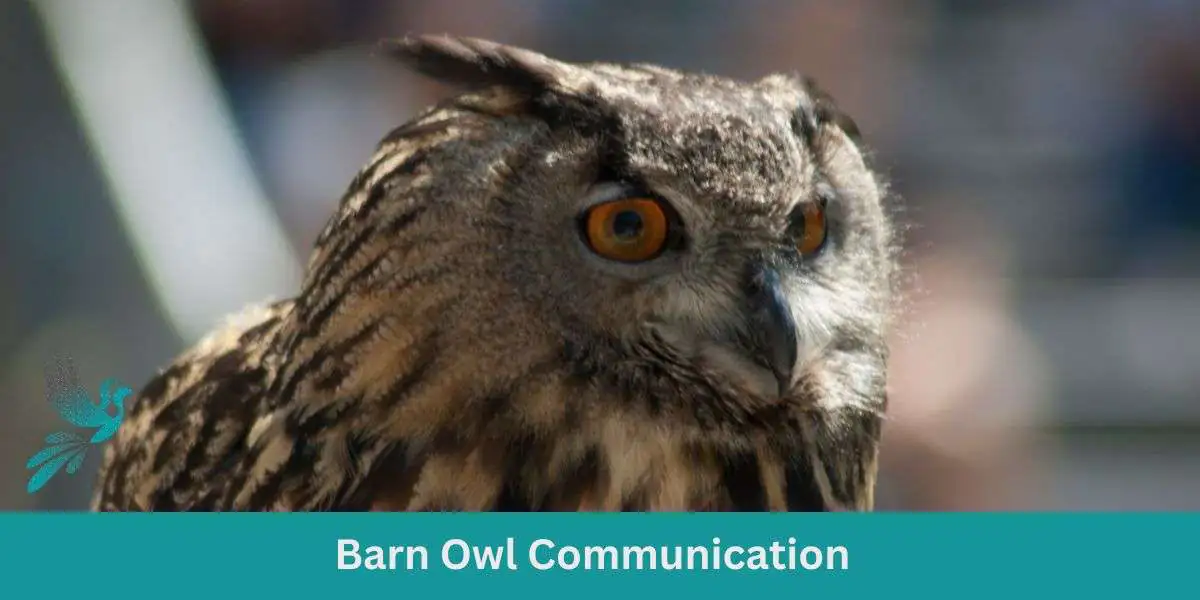With their ghostly appearance and haunting calls, barn owls have cemented their place in folklore and legends. But beyond the myths, these vocalizations play a pivotal role in the bird’s behavior and interactions.
Dive into the world of barn owl communication to discover what each call, screech, and chirp truly means.
Barn Owl Vocalizations And Communication
Decoding the Vocalizations of Barn Owls
- Contact Calls:
- Often used between mates or a mother and her offspring, these are short, soft calls that allow owls to locate each other without attracting unwanted attention.
- Screeches and Screams:
- Probably the most recognizable, these eerie calls are loud and can be heard from a distance. They serve multiple purposes, from declaring territory to warning potential intruders.
- Chittering:
- This is typically a series of short, rapid notes. Juvenile barn owls produce this sound when they are hungry, signaling to their parents that it’s feeding time.
- Hissing:
- When threatened, especially in their nesting site, barn owls may produce a drawn-out hiss. This sound, reminiscent of a snake, can deter potential predators or intruders.
- Bill Snapping:
- While not a vocalization, the rapid snapping together of the owl’s beak serves as an auditory warning to predators or threats. It’s an indication that the owl is on high alert.
- Song of Courtship:
- Males use a series of specific vocalizations to woo potential mates. These songs not only communicate availability but can also indicate the health and vitality of the caller.
- Navigation and Hunting:
- While barn owls mainly rely on their exceptional sense of hearing to hunt, they occasionally use soft calls to communicate with other owls during group hunts or to navigate dense areas.
These vocal expressions play a vital role in various aspects of the Barn Owl’s life, including territory defense, mate attraction, and parental communication. Understanding the significance of vocalizations is essential in comprehending the social dynamics and behaviors of these captivating creatures.
Territorial Calls: Defending Their Boundaries
One of the primary functions of Barn Owl vocalizations is to defend their territories.
Male Barn Owls emit deep hooting calls that serve as a signal to other owls, particularly male rivals, that the area is already claimed. These territorial calls can be heard over long distances and are a clear indication of the owl’s presence.
By vocalizing their ownership of a territory, Barn Owls minimize the chances of unnecessary conflicts and maintain peaceful boundaries.
Courtship Calls: Love is in the Air
During the breeding season, Barn Owls engage in courtship rituals involving a range of unique vocalizations. These courtship calls are essential in attracting potential mates and establishing bonds between them.
The male owl showcases his wooing abilities by producing a series of rapid, high-pitched screeches. These screeches are melodic and can be likened to a love song, designed to captivate the female owl. If the female is charmed by the male’s courtship calls, she responds with soft, chittering notes, indicating her interest and willingness to mate.
Nestling Communication: Feeding Time and Bonding
Once the Barn Owl couple has successfully mated and laid eggs, vocal communication becomes vital in the context of parenting and providing for the nestlings. The young owlets have a distinct vocalization called a begging call, which they use to communicate their hunger and urge their parents to bring them food.
This feeding call is a high-pitched begging screech that ensures the parents can accurately identify their offspring among a nest full of hungry chicks. By responding to these calls, the parents form a strong bond with their nestlings and provide them with the nourishment they need to grow and develop.
Alarm Calls: A Warning to Beware
Apart from territorial, courtship, and nestling communication, Barn Owls also employ vocalizations as a warning mechanism. When they sense danger or perceive a threat, they emit an alarm call to alert nearby individuals of the potential risk.
These alarm calls are intense, hiss-like screeches that indicate a state of distress or perceived danger. By communicating through alarm calls, the Barn Owls coordinate their response to the threat and ensure the safety of themselves and their brood.


Leave a Reply
You must be logged in to post a comment.